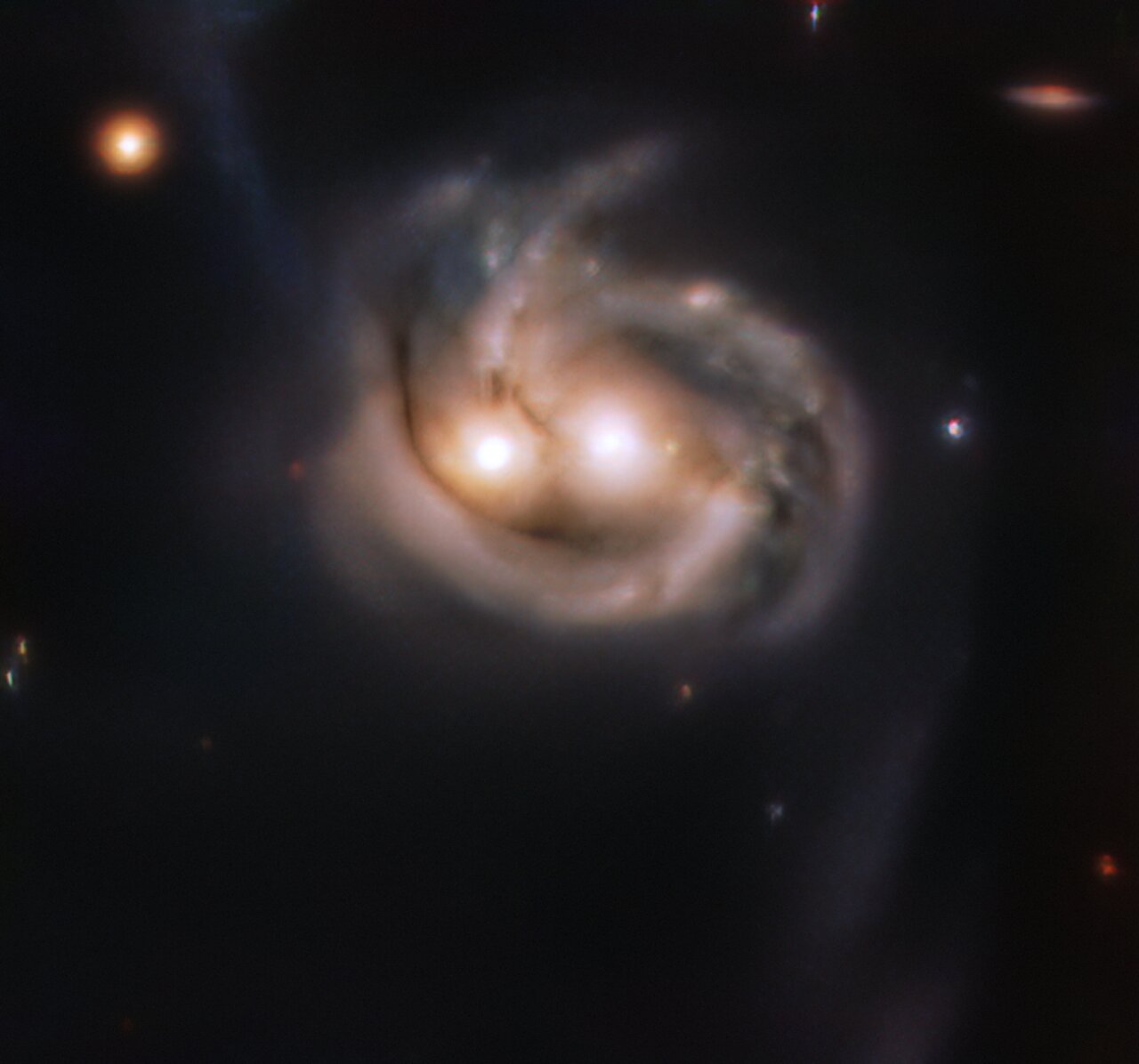The Cosmos with Mrk 739
This friendly-looking object is the result of two galaxies merging into one another, complete with a pair of eyes hiding two growing supermassive black holes and a swirling grin. Such mergers are rare in our galactic neighbourhood; Mrk 739 is close enough (astronomically speaking) to study the event in detail, and thus gain a better understanding of the dramatic processes that take place during these cosmic mergers. By using the MUSE instrument on ESO’s Very Large Telescope, the team of astronomers, led by master’s student Dusán Tubín at the Pontificia Universidad Católica de Chile, were able to study the effects of both the merger and the radiation emitted by the growing gigantic black holes. Their study answers questions about the motion of the galaxies, the age of their stars, and the elements they are made up of. They have found that one of these galaxies is much older than its companion, and that their merging process is at an early stage. MUSE is a 3D spectrograph that takes images — known as “datacubes” — of the object being observed over thousands of wavelengths. With MUSE, astronomers are therefore able to map in great detail the properties of the objects they study, because each individual pixel contains an impressive amount of information. Obtaining these exciting insights into galaxy merging and evolution with MUSE is enough to make anyone smile.
